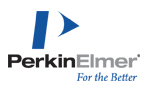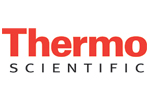Other Track AgendasAdvances in Biodetection & Biosensors | Advances in Microarray Technology | Advances in Protein Crystallography | Advances in Separation Technology | AgriGenomics Congress | Lab-on-a-Chip European Congress | Next-Gen Sequencing Europe | Screening Europe - HCS and Assays | Screening Europe - HTS & Compound Management | World Biobanking Summit |

Thursday, 30 June 201108:00 | Registration | |
Session: Fragment Based Lead Discovery |
| | 09:30 | From Fragments and Hot-Spots to Novel Lead Structures
Gerhard Klebe, Professor, Philipps University of Marburg, Germany
General experience shows that small molecule fragments, thought as initial leads for a drug design project, assemble in an ordered fashion in protein binding sites. Usually they populate at the hot spots of binding in protein surface-exposed binding pockets. Therefore, their crystallographic characterization is usually successful and the obtained structures provide a valid starting point for a subsequent optimization by growing the initially discovered fragments in the binding pocket via the decoration with suitable side chains. | 10:00 | Fragment Based Approaches to GPCRs
John Christopher, Associate Director, Heptares Therapeutics Limited, United Kingdom
An overview of Heptares’ proprietary GPCR stabilisation technology will be presented, together with examples of how the approach has opened up the GPCR target class to hit discovery through fragment screening. | 10:30 | Coffee Break and Networking in Main Exhibition Hall | 11:15 | Chemical Space as a Source for Fragments
Jean-Louis Reymond, Professor, The University of Bern, Switzerland
The chemical universe database GDB-13 (www.gdb.unibe.ch) enumerates all possible organic molecules up to 13 non-hydrogen atoms. The database contains 977 million organic fragments and provides a starting point to discover new bioactive ligands by virtual screening and synthesis. | 11:45 | Structure Biology to Understand Molecular Mechanisms in Tuberculosis
Matthias Wilmanns, Group Leader, European Molecular Biology Laboratory, Japan
Tuberculosis has regained a global threat, mainly because of the emergence of hyper-resistant strains against front line antibiotics and a major problem in HIV co-infections. Classical target-oriented drug discovery has not fulfilled the premises because of the complexity of the infection process in the human host.
We have set up a program to determine a substantial, relevant fraction of the complete proteome of Mycobacterium tuberculosis in 3D, by solving high-resolution structures using X-ray crystallography. We will present examples where the knowledge of these 3D structures nevertheless provide important insight into molecular mechanisms, leading to potential drug discovery. We will also demonstrate on some examples, how structural biology can be used as a posteriori validation tool, i.e. for potential lead compounds where targets were initially unknown. | 12:15 | Lunch and Networking in Main Exhibition Hall | 12:45 |  Free Workshop Free Workshop
Advancement of Separation, Purification and Crystallography from Agilent Technologies
,
| 13:15 | Poster Presentations | 13:30 |  Free Workshop Free Workshop
High Content Screening for Compounds and Genes Affecting Bacterial and Viral Infections
,
| |
Session: Protein Chemistry and Crystallisation |
| | 14:15 |  | Keynote Presentation Smart Materials for Protein Crystallisation
Naomi Chayen, Professor, Imperial College London, United Kingdom
|
| 14:45 | Chaperone-Assisted Crystallography with DARPins
Markus Gruetter, Professor, University of Zurich, Switzerland
A recurring effort to crystallize a particular protein is to bind it non-covalently to a specific helper binding protein – a crystallization chaperone. There is a wide range of tools available nowadays but their handling is often not as convenient as required. A valuable addition to the present repertoire of binding proteins is the designed ankyrin repeat protein (DARPin) technology. The potential of these novel binding proteins is illustrated by co-crystal structures with a variety of target proteins, including a membrane protein. The usefulness of DARPins in crystallization, the potential for phasing through DARPins and other recent approaches will be presented. | 15:15 | Coffee Break and Networking in Main Exhibition Hall | 16:00 | Crystallization and Structure Determination of Active and Inactive G Protein Coupled Receptors (GPCRs) using Stabilization Strategies
Gebhard Schertler, Head, Paul Scherrer Institut, Switzerland
| 16:30 | Latest Methods in Optimization of Crystallization by Combining in situ Light Scattering and Variation of Solution Contents
Christian Betzel, Professor, Universitat Hamburg, Germany
A unique and advanced hardware combination supporting methods to induce nucleation by adding precipitants or other substances to optimize the crystallization process via a feedback loop will be presented together with results obtained of various proteins and different scenarios. | 17:00 | Streamlining the Pipeline Towards Glycoprotein Structures
Joanne Nettleship, Senior Scientist, University of Oxford, United Kingdom
• High-throughput pipeline for glycoprotein production in HEK 293 cells.
• Parallelization and automation of expression screening.
• Glycan modification to aid glycoprotein crystallization.
• Automated large scale production and purification of secreted proteins.
• Use of transient transfection v’s formation of a stable cell line.
• Antibody Fab’s as co-crystallization chaperones.
• In situ diffraction for solving glycoprotein structures. | 17:30 | Drinks Reception |
Friday, 1 July 201108:00 |  Free Workshop Free Workshop
PCR without DNA purification – Thermo Scientific Direct PCR
,
| |
Session: Protein Chemisty and Crystallisation Continued |
| | 09:30 | Xaperone Assisted X-ray Crystallography: Turning on a G-protein-Coupled Receptor
Jan Steyaert, Group Leader/Director, Vrije Universiteit Brussels, Belgium
Nanobodies that faithfully mimic the effects of G protein binding were used to obtain diffraction quality crystals and to solve the first structure of an active agonist-bound state of the human ß2 adrenergic receptor. | 10:00 | Improving Protein Crystallography with Acoustics for Crystallization Screening, Solution Quality Monitoring and Crystal Transfer
Richard Ellson, Chief Technology Officer, Labcyte Inc, United States of America
Focused acoustics can transfer liquids and suspensions as well determine the quality and volume of crystallization solutions. Examples of protein crystallography work flows using acoustics will demonstrate miniaturization of screens, flexibility, and quality for a range of protein crystallography applications. | 10:30 | Coffee Break and Networking in Main Exhibition Hall | |
Session: Crystallography and Crystallographic Computing |
| | 11:15 | Lessons of Diffraction Resolution and how the Structures of the Various Crustacyanins have been Solved
Michele Cianci, Reseaerch Scientist, EMBL , Germany
The coloration of the lobster shell derives from astaxanthin molecules with proteins in complex with apocrustacyanin A1 solved using softer X-rays, and refined at 1.4Å resolution, and the b-crustacyanin dimer complex at 3.2Å resolution. The a-crustacyanin complex of eight b-crustacyanins has been studied by EM and SAXS at 30Å resolution. Several relevant carotenoids have been investigated by chemical crystallography at 0.8Å resolution, and their colours in solution and the crystalline state also determined. | 11:45 | The wwPDB Common Deposition and Annotation Tool : how Deposition at the wwPDB will Change
Thomas Oldfield, Team Leader, European Bioinformatics Institute, United Kingdom
The Worldwide Protein Data Bank (wwPDB) common deposition and annotator project will release a common deposition tool at all wwPDB partners sites at the beginning of 2012. This tool will significantly change the process of deposition of macromolecular structure data for the scientific community and this talk will present the salient points for the depositor. | 12:15 | Lunch and Networking in Main Exhibition Hall | 12:45 |  Free Workshop Free Workshop
Glosensor Technology: Intracellular Biosensors to Detect Signal Transduction in Living Cells
,
| 13:15 | Poster Presentations | 13:30 |  Free Workshop Free Workshop
Automatic High Content Screening for Life Sciences
,
| 14:15 | The Collaborative Computational Project Number 4 (CCP4) - Towards New Challenges in Crystallographic Computing.
Eugene Krissinel, Core Group Leader, CCP4, United Kingdom
CCP4 is a community based resource in Protein Crystallography with ultimate goals to play a key role in the development of new crystallographic software for academic, not for profit, and for profit research, as well as in education and training of scientists, dissemination of new ideas, techniques and practice. In this talk, the current state of the Suite, new developments and new challenges arising will be discussed. | 14:45 | Using Experimental Data Directly in Structure Solution
Navraj Pannu, Assistant Professor, Leiden University, Netherlands
A multivariate likelihood function applied to the different steps of experimental phasing leads to solutions when current methods fail. | 15:15 | Coffee Break and Networking in Main Exhibition Hall | |
Session: New Laboratory Instrumentation |
| | 16:00 | Facilities for Macromolecular Crystallography at BESSY-II
Manfred Weiss, Team Leader, Helmholtz-Zentrum Berlin, Germany
The Macromolecular Crystallography (MX) group at the Helmholtz-Zentrum Berlin (HZB) is operating three state-of-the-art beam lines for MX, which currently represent the most productive MX-stations in Germany. BL14.1 and 14.2 are energy tunable , while BL14.3 is a fixed-energy side station (13.8 keV). In the presentation, the beam line instrumentation as well as the available ancillary facilities will be presented and an overview of the experimental possibilities, which are possible, will be given. | 16:30 | EMBL@PETRA3. An Integrated Facility for Structural Biology
Thomas Schneider, Group Leader, European Molecular Biology Laboratory, Germany
EMBL is constructing an integrated facility for structural biology at the high-brilliance synchrotron PETRA III at DESY in Hamburg. Three beamlines for small angle X-ray scattering and X-ray diffraction will be operated together with on-site facilities for sample preparation and characterization and data evaluation. | 17:00 | Close of Conference |
|

 Add to Calendar ▼2011-06-30 00:00:002011-07-01 00:00:00Europe/LondonAdvances in Protein CrystallographySELECTBIOenquiries@selectbiosciences.com
Add to Calendar ▼2011-06-30 00:00:002011-07-01 00:00:00Europe/LondonAdvances in Protein CrystallographySELECTBIOenquiries@selectbiosciences.com